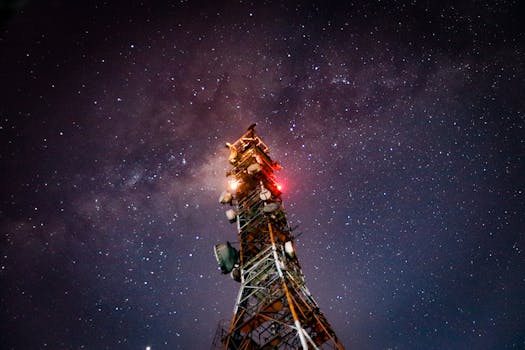
MEO Satellites: Revolutionizing Global Communication with Medium Earth Orbit Technology
MEO satellites, or Medium Earth Orbit satellites, are a type of satellite that operates in an orbit between 2,000 and 36,000 kilometers above the Earth’s surface. This orbit is higher than Low Earth Orbit (LEO) satellites but lower than Geostationary Orbit (GEO) satellites. MEO satellites are becoming increasingly popular due to their unique benefits and applications in global communication.
MEO satellites offer several advantages over other types of satellites. One of the primary benefits is their ability to provide faster and more reliable connections. Because they are closer to the Earth than GEO satellites, MEO satellites have lower latency, which is the delay between the time data is sent and the time it is received. This makes them ideal for applications that require real-time communication, such as video conferencing and online gaming.
How MEO Satellites Work
MEO satellites work by receiving and transmitting signals to and from Earth-based stations. They are equipped with transponders, which are devices that receive and retransmit signals. The satellites are also equipped with antennas, which are used to receive and transmit signals. The signals are transmitted to and from the satellite using radio waves, which are a form of electromagnetic radiation.
MEO satellites are typically used for a variety of applications, including navigation, communication, and Earth observation. They are often used in conjunction with other types of satellites, such as LEO and GEO satellites, to provide a comprehensive range of services. For example, a MEO satellite might be used to provide navigation services, while a LEO satellite is used to provide Earth observation services.
Applications of MEO Satellites
MEO satellites have a wide range of applications, including navigation, communication, and Earth observation. One of the most significant applications of MEO satellites is in the field of navigation. MEO satellites are used to provide location information and timing signals, which are used by GPS receivers to determine their location and time. This information is critical for a wide range of applications, including aviation, maritime, and land transportation.
MEO satellites are also used for communication applications, such as providing internet connectivity to remote or underserved areas. They are often used in conjunction with other types of satellites, such as LEO and GEO satellites, to provide a comprehensive range of communication services. For example, a MEO satellite might be used to provide broadband internet connectivity, while a LEO satellite is used to provide narrowband communication services.
Benefits and Challenges of MEO Satellites
MEO satellites offer several benefits, including faster and more reliable connections, lower latency, and increased capacity. They are also less expensive to launch and operate than GEO satellites, which makes them a more attractive option for many applications. However, MEO satellites also have some challenges, including the need for more complex systems and the potential for interference from other satellites.
Despite these challenges, MEO satellites are becoming increasingly popular due to their unique benefits and applications. As the demand for global communication and navigation services continues to grow, MEO satellites are likely to play an increasingly important role in meeting this demand. With their faster and more reliable connections, lower latency, and increased capacity, MEO satellites are revolutionizing the way we communicate globally.



